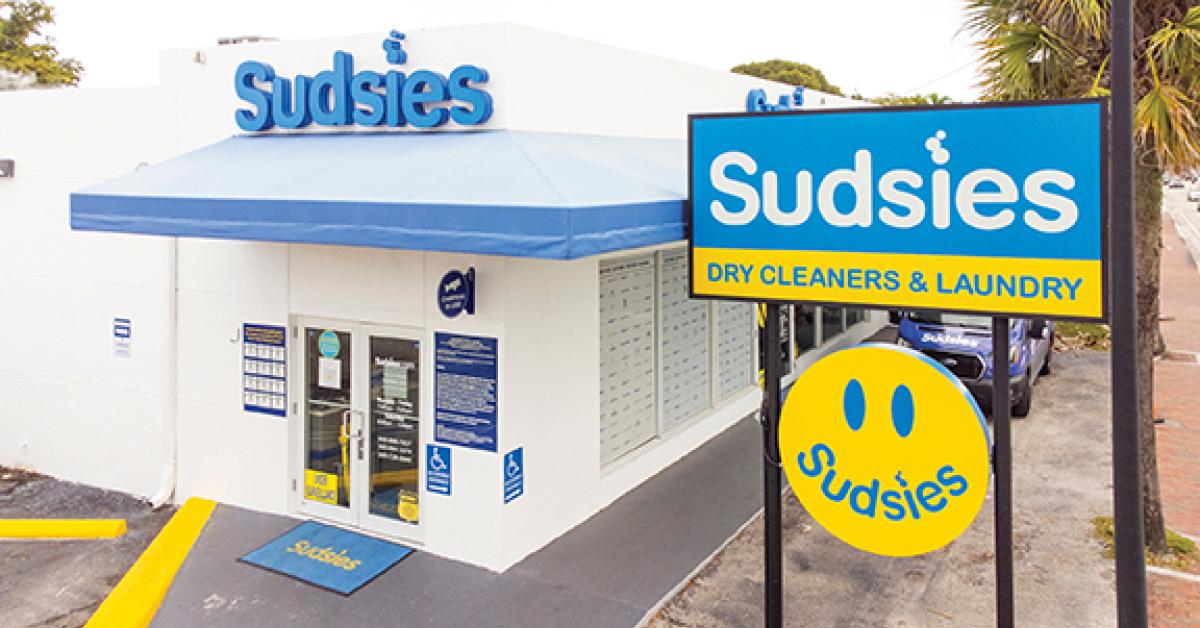MIAMI — When it comes to caring for delicate — and expensive — couture clothing, there’s no substitute for the right equipment and experience in cleaning success to bring peace of mind to its owner.
For Jason Loeb, owner of the South Florida-based Sudsies Garment Care, that level of care begins with clear communication, describing his process of cleaning high-end clothing to the customer.
“You have to explain to them the difference you bring, and what they need,” he says. “They need confidence. They need to be confident when they bring in a $13,000 skirt or a $1,200 dress shirt.”
Loeb has worked hard to make sure his customers are confident in his business and process, and this has led to happy customers, he says, who become repeat customers.
“Do you think this person who has a $1,200 dress shirt doesn’t have 50 of them?” he asks. “We have people dropping off bags of clothes with 10 items (that) could be worth $40,000 or $50,000. We have people who send us garments from all over the world. They do it because they have confidence in us. They understand the value that they get, and they know we’ll take care of them.”
In 2008, Sudsies saw a significant opportunity to drive growth by increasing its designer garment business. While the chance was exciting, Loeb knew it wouldn’t be easy, as meeting the needs of couture customers would require advanced cleaning technology and know-how.
What Makes Couture?
Couture clothing — the high-end garments that Sudsies specializes in cleaning — is different from everyday wear in both the materials used and the skill of its makers.
Couture materials can include exclusive laces; feather fabrics; beaded fabrics; high-fashion silver and gold fabrics; exclusive silk fabrics; cotton and linen fabrics; luxury cashmere; and bridal dress fabrics.
The care taken in creating couture clothing also sets it apart from more common apparel. Loeb says that it takes an average of 150 hours to create a “simple” couture dress or suit, and can take more than 1,000 hours to create a piece that involves fine embroidery or other embellishments.
For haute couture — the highest standard — the garments must be made by a design house that, among other requirements, creates made-to-order clothes for private clients at an atelier (workshop) employing at least 15 people and presents a collection of no less than 50 original designs to the public every season, in January and July.
Houses that qualify for this designation include Christian Dior, Giorgio Armani, Givenchy, Jean Paul Gaultier and others.
Training to Get the Best Results
Loeb believes in training his team to take care of customers and their garments, no matter if it’s for their normal everyday clothes or the height of haute couture.
“Our people go through an 18-day program of training, which is about eight hours a day in the classroom, and then two weeks live with somebody before they ever take care of a customer,” he says. “If you become a Sudsies valet — and we have more than 40 them — you go through the same training program, and then spend another two weeks with someone on the road.”
When it comes to cleaning clothes that can cost thousands of dollars per piece, however, Loeb has expert staff members to take care of those customers.
“Our cleaning professionals have been with us for a very long time,” he says. “Our cleaning department people have been with me for 15 or 20 years, and they’ve been trained since day one. It’s not just knowing cleaning — it’s knowing what to clean, and if it needs deep cleaning. There are many different levels of cleaning.”
Some of the special services Sudsies undertakes when cleaning couture clothing are cleaning by hand; button removal for deep cleaning; wet cleaning and laundering; restoration services when necessary; garment reassembly; and packaging by hand.
Perhaps the most vital part of the process, however, is communication with the customer, which builds that all-important confidence.
“We don’t clean items without the customer’s authorization,” he says. “What does the customer expect for you to achieve? You always have to be able to communicate that effectively. If you can’t, it’s not going to work.”
Since starting this service, Sudsies has made a name for itself in the industry — so much so that it trains staff from cleaning companies across the nation in its couture cleaning processes.
Come back Thursday for the conclusion of this series, where we’ll look at the tools Sudsies uses for couture clothing care, as well as ways they work to limit their environmental impact.
Have a question or comment? E-mail our editor Dave Davis at [email protected].































